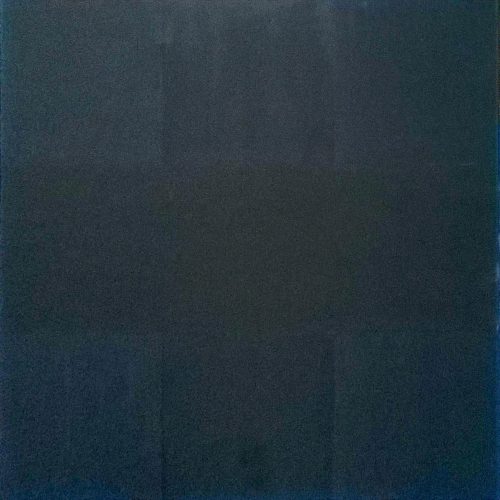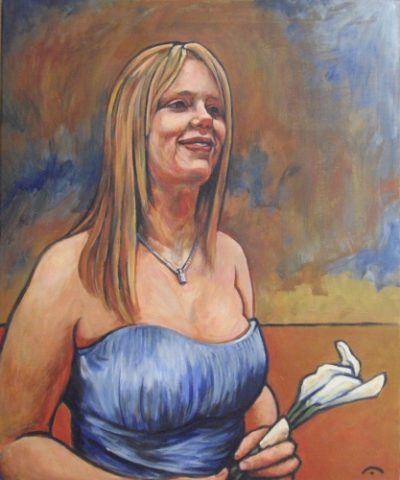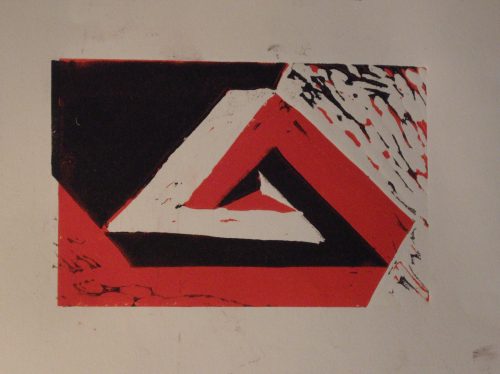
I’ve just successfully completed the Museum of Modern Art‘s Course called “In the Studio: Postwar Abstract Paintings“.
It was presented by Corey d’Augustine whose relaxed, hands on approach together with his evident expertise provided a fantastic introduction to the Abstract Expressionist movement. It certainly caused me to think more deeply about their aims and objectives, and has certainly provided a number of ideas that I’d like to try and introduce into my own art at some stage.
As mentioned before, the course is free (unless you wish to purchase a certificate) and is highly recommended.
The artwork above is my attempt to replicate Ad Reinhardt’s ‘black painting’ methodology (see Corey d’Augustine’s youtube video from the course below). Also below is the text I submitted to the course in support of my attempt to recreate his work.
Course Submission:
Objective:
For this assignment, I chose to attempt to recreate a piece in the style of Ad Reinhardt, since I had found him the hardest Abstract Expressionist artist to understand.
Approach:
As advised by the Course Tutor, I filled three separate jars with a mixture of Mars black together with proportions of Alizarin Crimson, French Ultramarine Blue and Viridian Green, plus large quantities of Low Odour White Spirit. I then shook each jar vigorously for several minutes, after which they were left to stand for 3 weeks in order to draw out the linseed oil medium.
At the end of this period, I poured off the clear layer of solvent and separated medium to leave a ‘sludge’ of pigment at the bottom of each jar.
I took a brand new 60cm x 60cm brand new primed canvas and marked 9 equal squares on its surface using pencil.
I then filled the squares of the canvas with pigment from the jars in the following configuration:
|
Blue |
Green |
Blue |
|
Red |
Red |
Red |
|
Blue |
Green |
Blue |
I tried to keep within the lines of the square and made every attempt to minimise evidence of brush strokes. I ensured that the edges of the canvas were painted with the appropriate colours of their adjoining squares. I applied 2 or 3 coats to ensure an even covering with no bare canvas showing through.
Results:
The resulting picture is attached. It is incredibly matt, but there are some areas where the canvas shows through faintly so I would like to apply more coats. I didn’t test/adjust the colours during the separation period, so they appear extremely black (although they did have a faint cast of their relevant pigments in the jars, and I have caught glimpses of the colours in certain lights, although the light was fading when I completed it, so I can’t check it properly until tomorrow.)
Producing this painting raised more questions than answers:
- I struggled with hairs and dust. Did Reinhardt paint in a ‘clean room’ to prevent dirt ingress?
- If, as the Course Tutor advises, Reinhardt was not too particular about the edges of squares, does this mean that he was happy with ‘overlaps’ between colours? Does that mean that colours are varied at the joins between squares?
- My pencil lines disappeared after the first coat and, with the colours being so similar in hue/value, painting up to the lines became harder and harder. How did Reinhardt ensure that he kept his squares? Did he redraw them after each layer?
- My colours appear too black. Did Reinhardt develop a ‘recipe’ to ensure repeatability of his paintings?
- The Course Tutor describes Reinhardt as being a non-gestural painter. Whilst I wholly agree that there was something truly ‘meditative’ about his approach to painting, my experience was that I was very conscious of the ‘gestures’/directions of my brushstrokes. Could Reinhardt’s paintings be ‘gestural’ with the gestures deliberately hidden/only apparent to those ‘in the know’?
- I’ve read elsewhere that a number of the Abstract Expressionists were interested in Theosophy. Was Reinhardt’s meditative approach to painting inspired by this?
- Painting this image just once felt like painting a black hole to me. What was Reinhardt painting for all those years? Death? Nothingness? The Void? The gateway to Hell?
In conclusion, I found this a fascinating project and the painting is now hanging on my wall (although I’m scared to look into it…)


